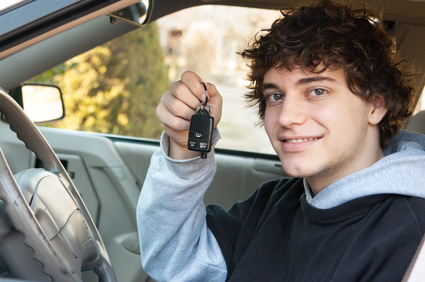 No one wants to be involved in a car accident, but they happen every day. Unfortunately, teen drivers are involved in many of them. The risk of motor vehicle crashes is higher in teens aged 16 to 19 than in any other age group. In fact, one out of every five teen drivers has a car accident within the first year of driving. The causes range from weather conditions and lack of experience to texting while driving. To keep themselves and others safe on the road, teens need to know how to behave when behind the wheel. Share the following must-have information with your teen to improve his or her road safety knowledge and reduce accident risk.
No one wants to be involved in a car accident, but they happen every day. Unfortunately, teen drivers are involved in many of them. The risk of motor vehicle crashes is higher in teens aged 16 to 19 than in any other age group. In fact, one out of every five teen drivers has a car accident within the first year of driving. The causes range from weather conditions and lack of experience to texting while driving. To keep themselves and others safe on the road, teens need to know how to behave when behind the wheel. Share the following must-have information with your teen to improve his or her road safety knowledge and reduce accident risk.
How to Handle Being Stopped by a Police Officer
When an officer signals for you to stop, pull to the side of the road safely and promptly. Turn off your car engine, and roll down your window. Keep your hands visible. Never argue with the officer, or make sudden or threatening moves. Be respectful throughout the process and follow directions.
What to Do After an Accident Occurs
If your car is drivable, and you and your passengers haven’t sustained serious injury, turn on your emergency flashers, and pull out of traffic safely. Report the accident to the police immediately. Exchange insurance details with the other driver, but avoid admitting fault or discussing details with him or her. Use your cell phone to make notes or take picture of damage.
Phone Use While Driving
When driving, use only a hands-free device. Never text while driving under any circumstances. Distracted driving is a major cause of accidents, especially among teen drivers.
Dealing with Friends Who Drink and Drive
Drunk driving is virtually inviting a car accident. Never get into the car with an intoxicated driver. Call someone for a lift, or pay for a taxi instead. And don’t let intoxicated friends get behind the wheel. Stay smart and stay alive.
Driving in Bad Weather
Rain, fog and snow can make it difficult to drive safely. When faced with severe weather, slow down and leave extra room between yourself and the car in front of you. If your car begins to skid, don’t panic, and don’t forcefully hit the brakes. Ease your foot off the accelerator, and steer the car gently in the direction you want it to go. Never jerk the wheel or try to make a sharp turn.
Build Safety Skills by Learning from a Pro
Another way to maximize driving safety and reduce accident risk is to obtain professional driving lessons. A driving instructor can provide detailed, hands-on safety training for dealing with common road emergencies that inexperienced teens may not know how to handle.
